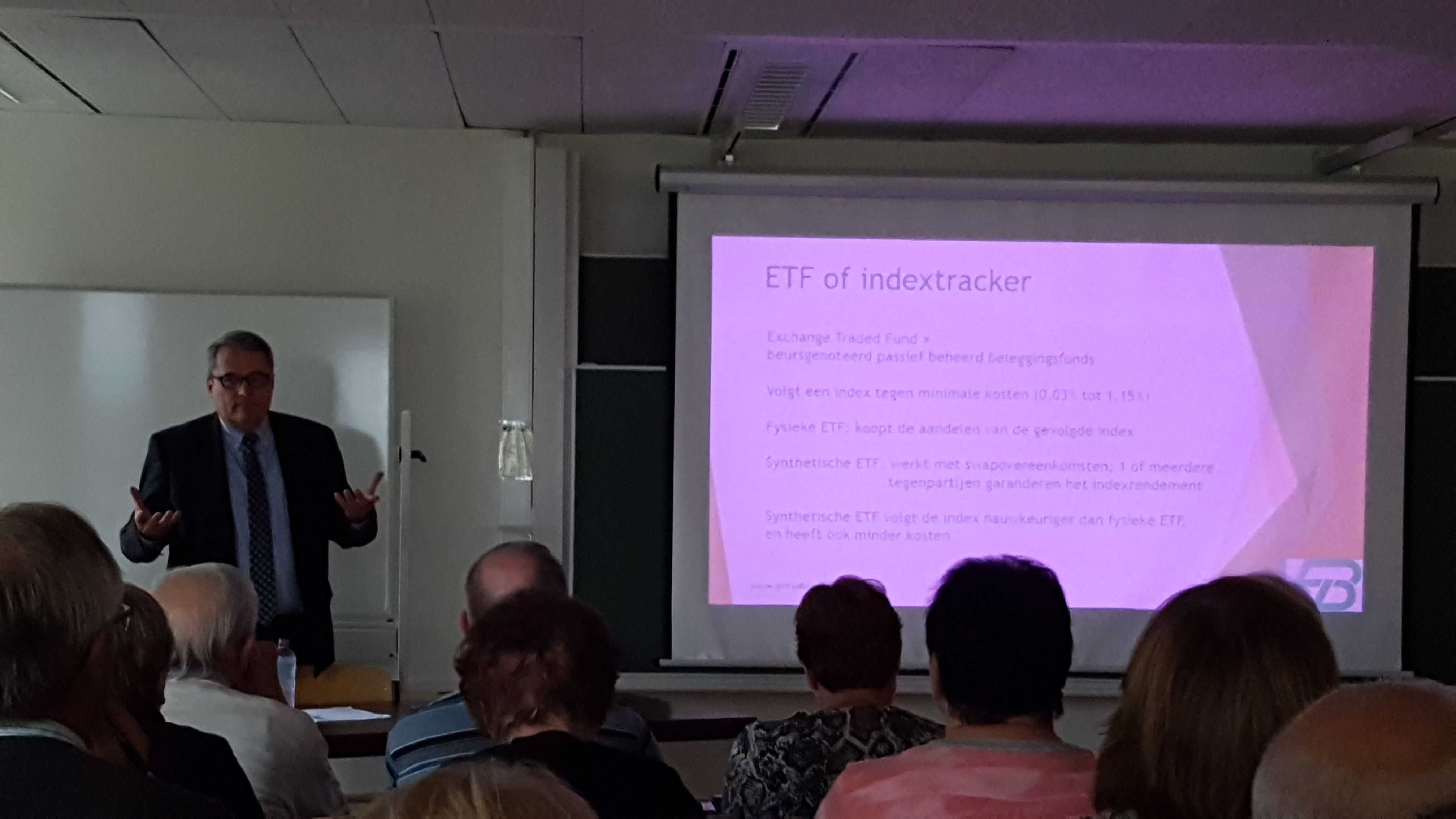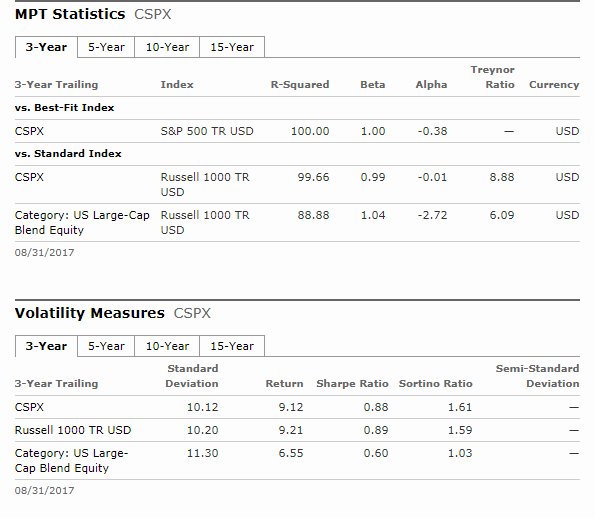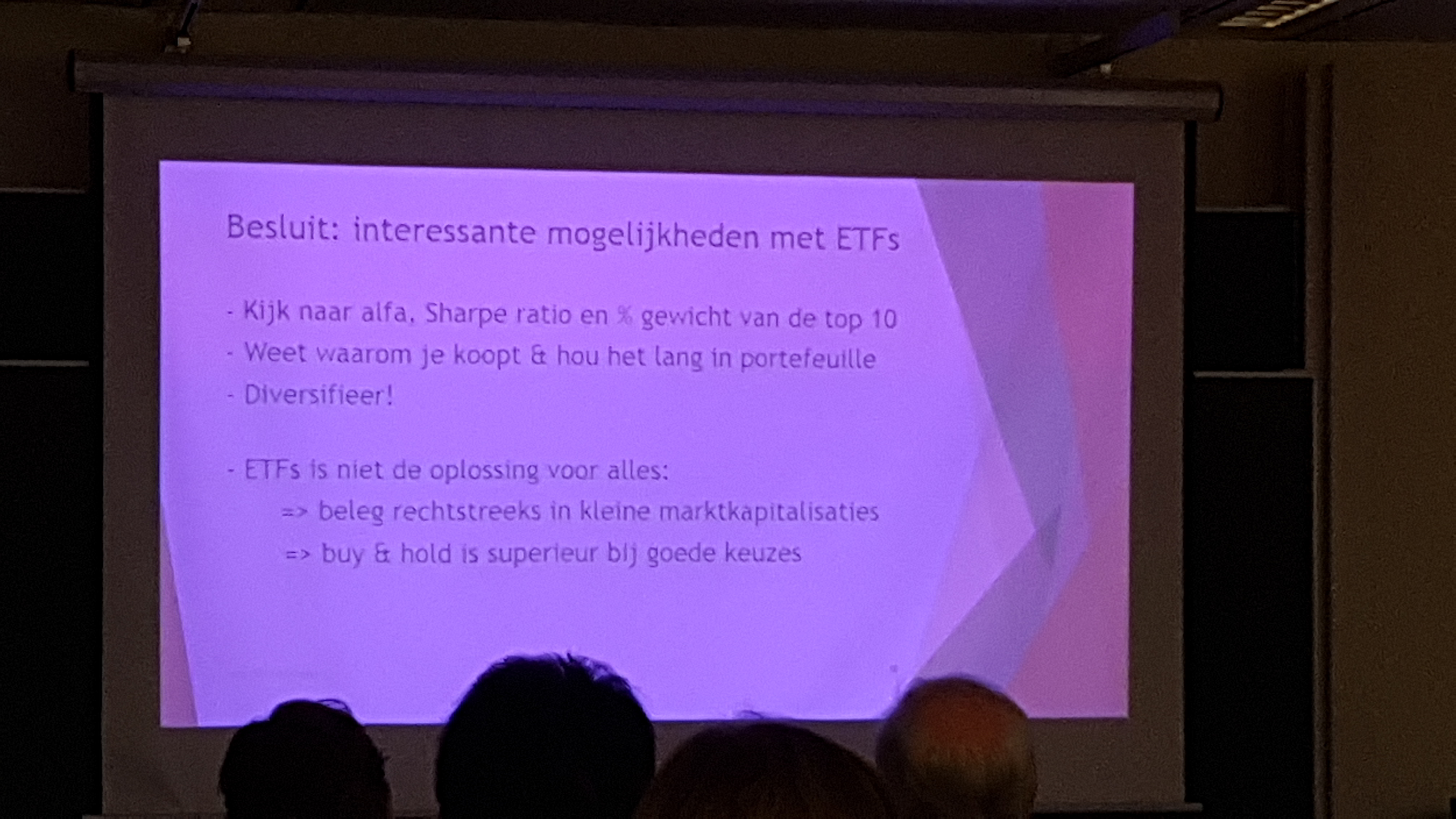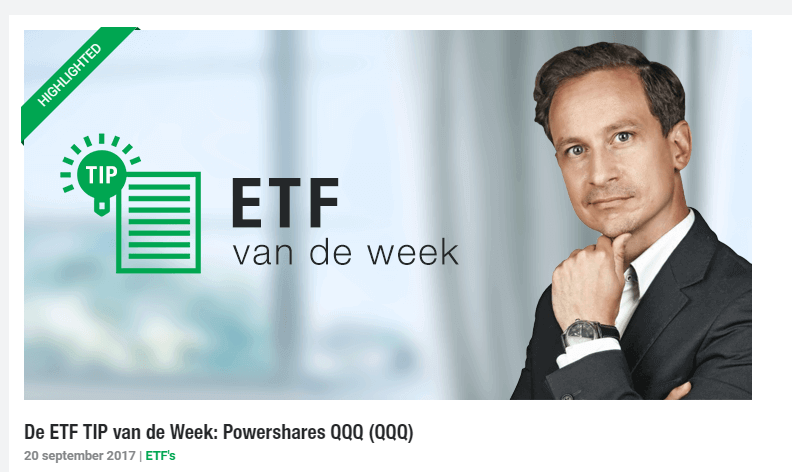 On the 5th of September, VFB Trefpunt in Antwerp, Belgium organized an infosession for investors about “Successful Investing with ETFs”. The presentation was given by Patrick Verelst. As I use ETFs within my dividend portfolio, I was interested to hear what kind of investment strategy with ETFs would be presented that leads to success. I am always interested to learn something new.
On the 5th of September, VFB Trefpunt in Antwerp, Belgium organized an infosession for investors about “Successful Investing with ETFs”. The presentation was given by Patrick Verelst. As I use ETFs within my dividend portfolio, I was interested to hear what kind of investment strategy with ETFs would be presented that leads to success. I am always interested to learn something new.
The Presentation
The agenda of the presentation is split in three chapters
- Fundamental choices in advance
- The Morningstar guidance
- Factor investing with ETFs
Can you perform better than the stock market with ETFs ? Patrick believes you can. An ETF or Index tracker follows the index with low costs (0,03 – 1,15%). There are two types of ETFs.
A synthetic ETF works with swap agreements with counter parties. This follows the index more precisely and has lower costs. A physical ETF buys the underlying stocks.
The most important advantages of ETFs are that they are diversified, liquid, transparent, flexible and cost efficient.
What are your Fundamental Choices?
An ETF is a passive fund which means it is a longterm choice. Patrick recommends to invest only in physical ETFs and capitalized ETFs (no dividend) – you pay more stock tax (1,32% instead of 0,27%). Also invest in ETFs in Euro so you have no currency impact. Chose big ETFs so you can get out thanks to their liquidity.
Focus on the correct index choice with a balanced portfolio.
What are your Index choices ?
Patrick gives two examples :

- MSCI ACWI (All Country World index ) = 23 developed and 24 emerging markets (85% of the world)
- MSCI World 23 developed countries
When we compare both index trackers, MSCI World performed 20% less. Other examples are Dow Jones CSINDU, S&P 500 CSPX
The Morningstar guidance
Go to the website of Morningstar. One of the tabs is ETFs. Enter a ticker CSPX as an example. There are 4 indicators that are important for an investor :
- Alpha : almost 0
- Beta = 1
- R – squared
- Standard deviation = risk level
- Sharpe ratio = % return per unit of risk
You can also review an analyst rating which can be a guidance for performance. The Sharpe ratio is the most inportant indicator. It tells you “What is my possible performance for my risk?”
What is ‘Factor Investing’
Factor investing is an investment strategy in which securities are chosen based on attributes that are associated with higher returns. Factor investing requires investors to take into account an increased level of granularity when choosing securities; specifically, more granular than asset class. Common factors reviewed in factor investing include style, size, and risk.
Factor investing works best in low value and small market caps. Look for the following attributes :
- Small market cap
- Low risk – low volatility
- Momentum
- Quality and dividend growth
- Combination of the above
Patrick walks through some ETF examples and shows the graphs and attrributes of the following ETFs :

- CSUSS
- CSEMUS
- SPMV – Alfa = 3,7 You would gain at least 3% per year – Sharpe ratio is more attractive
- SPMV –iShares Edge S&P 500 minimum volatility
- MVOL
- MTUM – Morningstar
- IUMO iShares Edge MSCI USA Momentum Factor – Costs 0,20%
- EQQQ Powershares EQQQ Nasdaq
- UDVD – SPDR S&P US Dividend Aristocrats
- SPHD – High Dividend
Conclusion
There are interesting investment opportunities with ETFs. Always look at the alfa (you need a positive high alfa – avoid negative alfa) Look at Sharpe ratio – this reflects your risk level. Know what you buy and diversify.
ETFs investing is not the holy grail. Buy & Hold your position when you pick a good one !
My Own Opinion
As factor investing is new to us, we did some research and found this interview on Morningstar. It is an interview between Christine Benz and Alex Bryan. He is director of passive strategies research for Morningstar in North America. Click on the link to read the interview.

Now the research has suggested that the relative outperformance of factor investing is the largest in the small-cap space. So, if you compare a low-vol strategy against its parent benchmark within the same market-cap realm, that benefit is the biggest in the small-cap space. So, one of the funds that Alex Bryan really likes in this space is the PowerShares S&P SmallCap Low Volatility ETF. This fund targets the least volatile fifth of the S&P Small Cap 600 Index and then it weights its holdings based on the inverse to their volatility so that the least volatile stocks get the biggest weightings in the portfolio.
There are many websites out there with ETF search tools and an ETF tip of the week. One website we want to highlight is the website of Lynx. You can find an ETF investment tip per week. In case you need it in English, ask Google to translate the page in your local language.
Personally we have no experience with this kind of investment strategy of factor investing. It looks a bit complicated to me. I prefer to keep it simple.
We leave it to your own judgment if you can apply it or not.
Final Conclusion
In our Dividend Investment strategy we rather focus on dividend paying ETFs. It is correct that we pay dividend taxes on this passive income but it’s money we can re-invest in new paying dividend paying ETFs or stocks. Most investors just look at the % performance against a benchmark. I prefer to look at the money put on my bank account each month. A different mindset.
Personally I am not a believer in complicated investment straties as it is typical bankers’ or funds selling brokers’ language to confuse a retail investor. Keep it simple is our advice !
As always we end with a quote.


No Comment
You can post first response comment.